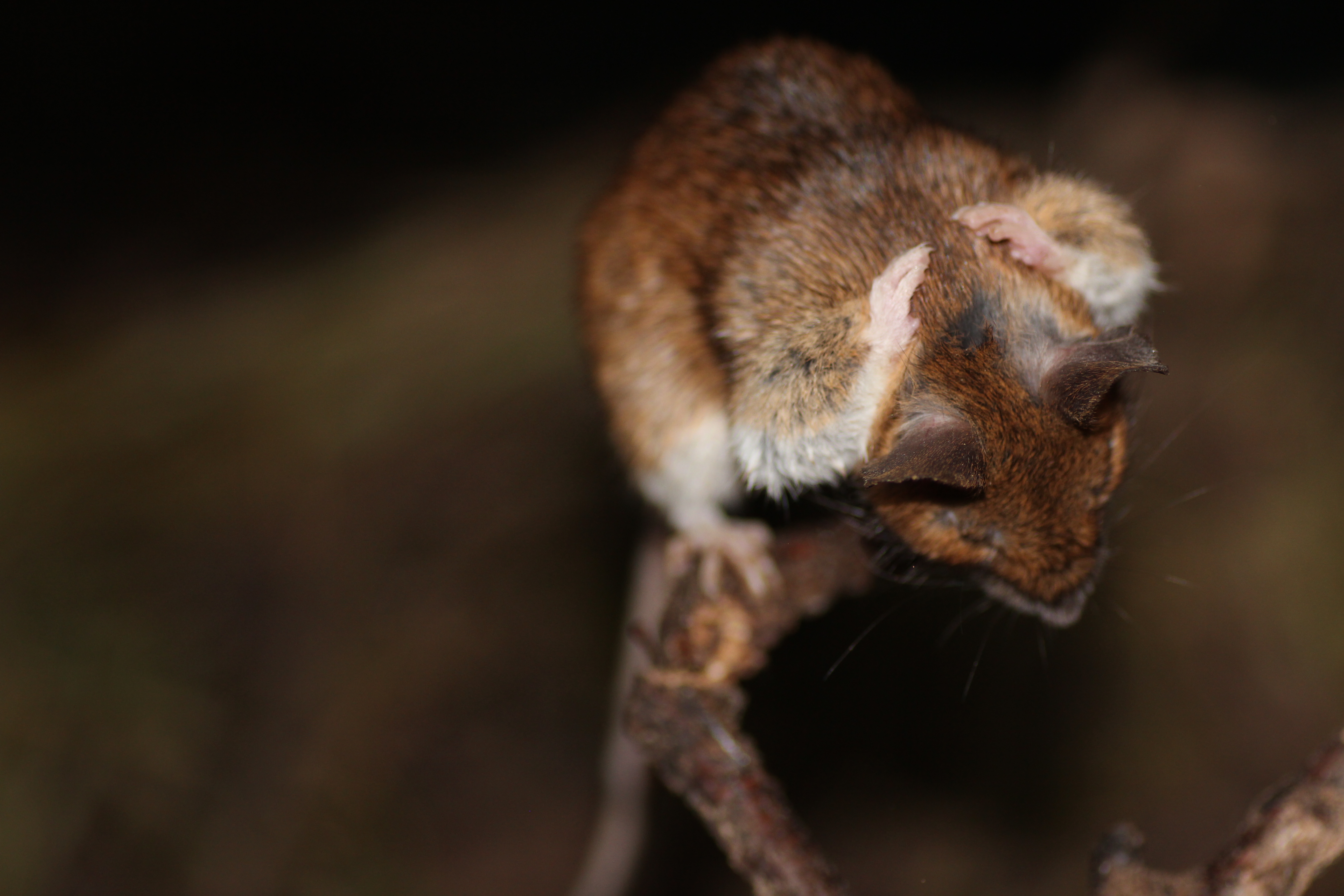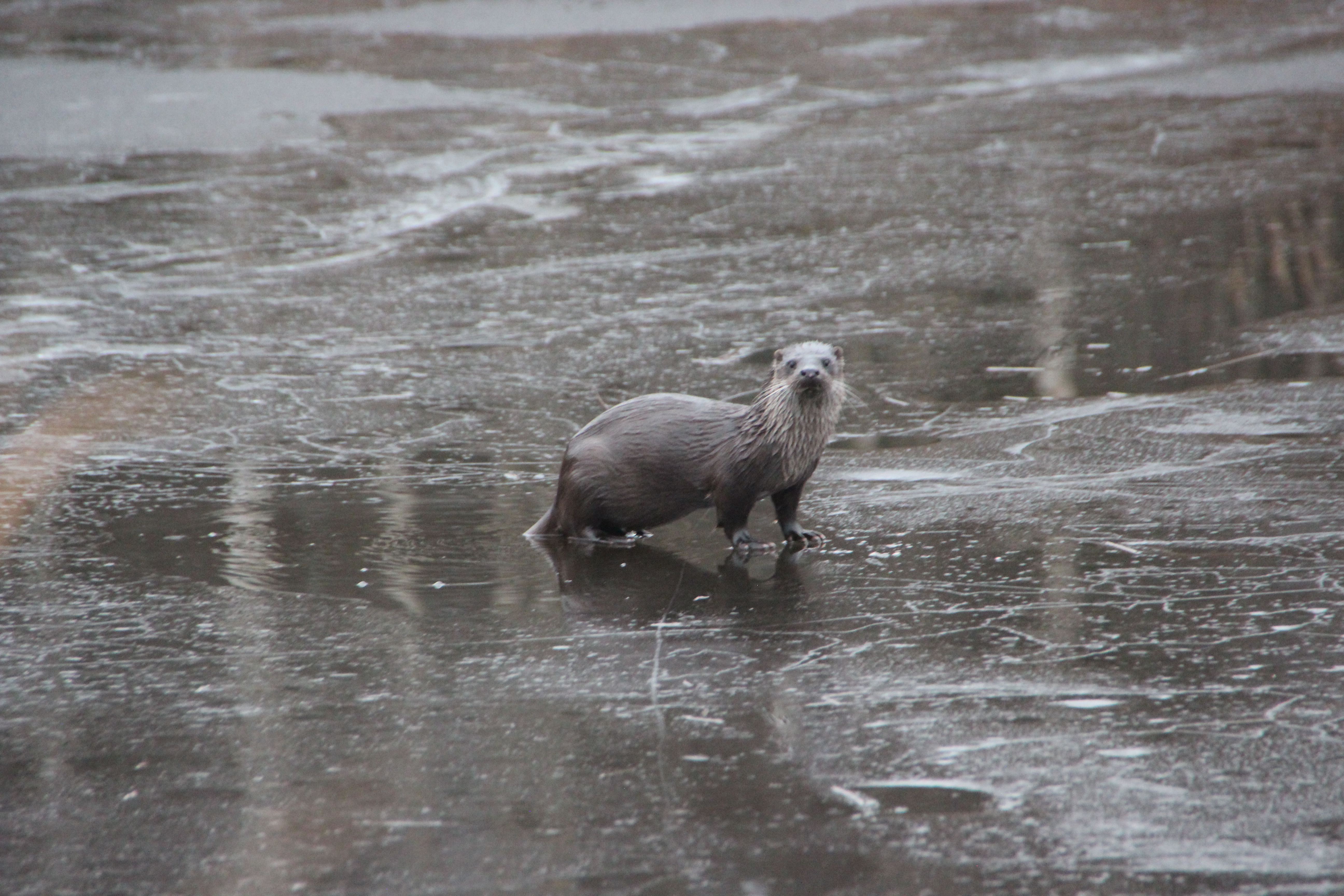Animals Take Care of Their Fur
When the winter comes, almost every mammal changes its fur, its colour. The fur is very important - not only it regulates the body temperature, and helps to hide from predators but also informs other animals about the mood. Therefore mammals are unsparing and regardless of the time of the year and the air temperature, they clean themselves after coming into contact with same species animals or with other species, usually also after chasing, digging, often before and after bedtime, and almost always after eating.
These animals have many different kinds of pheromone-releasing glands that produce a specific smell. Mainly it is intended to communicate with same species animals. One of the most important reasons for cleaning themselves is the following: by tidying up their body, animals are trying to suppress the intensity of a foreign smell, thus acquiring more intensive smell of their own. It goes without saying that an important reason to clean the body is to get rid of any dirt and ectoparasites.
Greasing the fur to protect it from wetting
Almost every mammal has hair. Each hair has a sebaceous gland which secretes a lubricating oily matter. The sebaceous gland opens in the hair follicle, and secretes a lubricating oily matter (sebum) into the hair follicle to lubricate the skin and hair. For some animals, hair grows constantly, but for most of them, hair growing interchanges with its loss. During the loss period, animals need to take care of their fur more intensively to get rid of the dead hair.
Animal hygiene is based on conditional and unconditional reflexes and they have suitable tools to take care of their body. Most of the mammals use water or snow (swimming, washing, wallowing in it), the tongue, extremities – forefeet and hind legs, and also front teeth.
There are animals that have a specific part of the body that helps to observe hygiene, for example – the beaver. This animal has a serrated nail on its hind leg second finger and it works as a hair brush. Since it is an amphibiotic mammal, its fur is structured to get less wet and sustain more body heat when it gets in contact with water for a longer time. The thick fur layer consists of short, greased hair growing close together. For that reason, most of the time when the beaver comes out of the water, its fur is almost dry. However, to be sure, after swimming it always shakes off the water and tries to get rid of any wetness and dirt left on the outer fur as fast as possible. The big rodent, sitting on its wide tail, takes care of itself leisurely: it cleans the chest, stomach, sides, back, head using arms and teeth, and with hind legs takes care of the fur. During the process, the beaver spreads over with a special anal or sebaceous gland secretion – it greases itself to be water repellent and to fragrance the fur. Thanks to these activities and body characteristics, after a swim, the beaver is always almost dry.
The second most popular amphibiotic animal in Latvia – the otter, also starts to take care of the body instantly when getting out of the water. Firstly, the animal shakes off the excess water that is left in the fur; if there is no obstacle, it wallows into substratum (snow, grass or even sand). Afterwards, just like the beaver, it cleans itself up using the tongue, but unlike the beaver, it licks very carefully its tail – the long, slim, hairy “swimming wheel”.
During the change of the fur, animals might look shabby.
Fidgeting when in stress
Observing the animal movements, it should be kept in mind that often their activities that we consider as hygienic are not connected with toilet at all. Many animals tend to lick their painful body spots and often even those which are not injured openly (bitten, scratched, shot). If some animals fidget more than usual and the reason is not obvious, it can indicate fuss and stress.
Almost all rodents, squirrels (also other mammals) dry themselves, fidget, rub, scratch, lick their fur, when they are under pressure - just like human-beings when in stress. We behave similarly – scratch the head or do other uncontrolled actions unknowingly.
Ethologists (the scientific and objective study of animal behaviour, usually with a focus on behaviour in natural conditions) believe the behaviour of maintaining body cleanliness or comfort to be quite an important animals’ functional sphere of life. And it does not apply to wild animals or mammals only.
Birds do not fly with dirty feather
Birds dedicate quite a lot of time of their active life to clean their fur. Many birds also do hygienic manipulations – greasing and powdering their feathers. After having a meal, all birds try to wipe the beak against the ground, in snow or even branches.
Unlike mammals, birds do not have skin glands. But part of the birds have one special gland that is located above the tail bone. Waterfowls could not live without it. Actually, not even a single bird could live without water, without washing in the water – dew, puddle, pond, or any other water body. Some birds can wash in the snow if there is no access to the water, but no bird can live without washing. Birds with dirty feathers cannot fly properly; waterfowls can neither swim, nor dive.
After washing, all terrestrial birds shake themselves off, then dry and preen themselves. Waders also do that, for example – herons, storks, cranes. These birds also powder their feathers to be water repellent because they live mostly in wet lands. Many waders have their own “powder-box” – a fragile ball that consists of down feathers. The birds using their beak obtain powder horn from it, and afterwards, they spread it over their vaned feathers.
The true waders, for example, ducks, geese, swans, spread over a special oily ointment secreted by the above-mentioned tail gland. To make their body water proof, birds using their beak squeeze oil out of the gland and gradually spread it over each part of the body. The most difficult part of the process is spreading it over the head. At the end of the procedure, birds need to rub the head against already greased back or grease it using a leg.
Fly – the cleanest animal of all
This autumn, climatic conditions in the Latvia are no longer suitable for proper activities of poiquilotermo terrestrial animals (whose body temperature is affected by the environment). For that reason, most of these animals are dead or have found a suitable place for surviving the winter. However, in the end, a few sentences should also be devoted to them, because arthropods belong to the poiquilotermo group, which is very tidy. Arachnids, as well as insects (including those living in the water) are very tidy.
It is interesting that flies that are a symbol of dirtiness in human eyes, work extremely hard to clean their body. Hardly any fly (unless disturbed suddenly) soar up before it has tidied itself. The body of a fly is covered with chitin hair, and each hair needs to be wiped with the leg, the middle section of which has a special brush. The stomach needs to be cleaned, as well as the back. Flies have five eyes – two compound eyes and between them there are three simple eyes called ocelli. And all of them need to be cleaned. Of course, both of the wings need to be cleaned, and the cleaning tools – the legs, also need to be cleaned by rubbing one against another. Flies in deed are very tidy!




